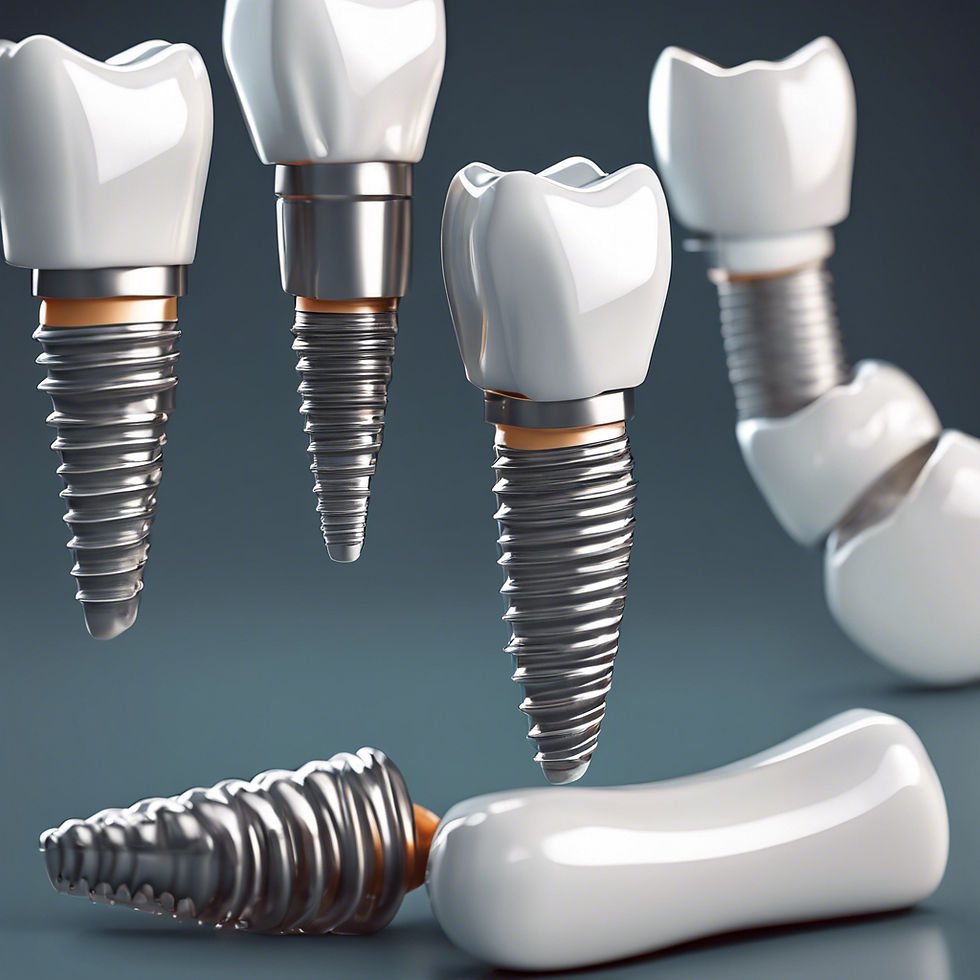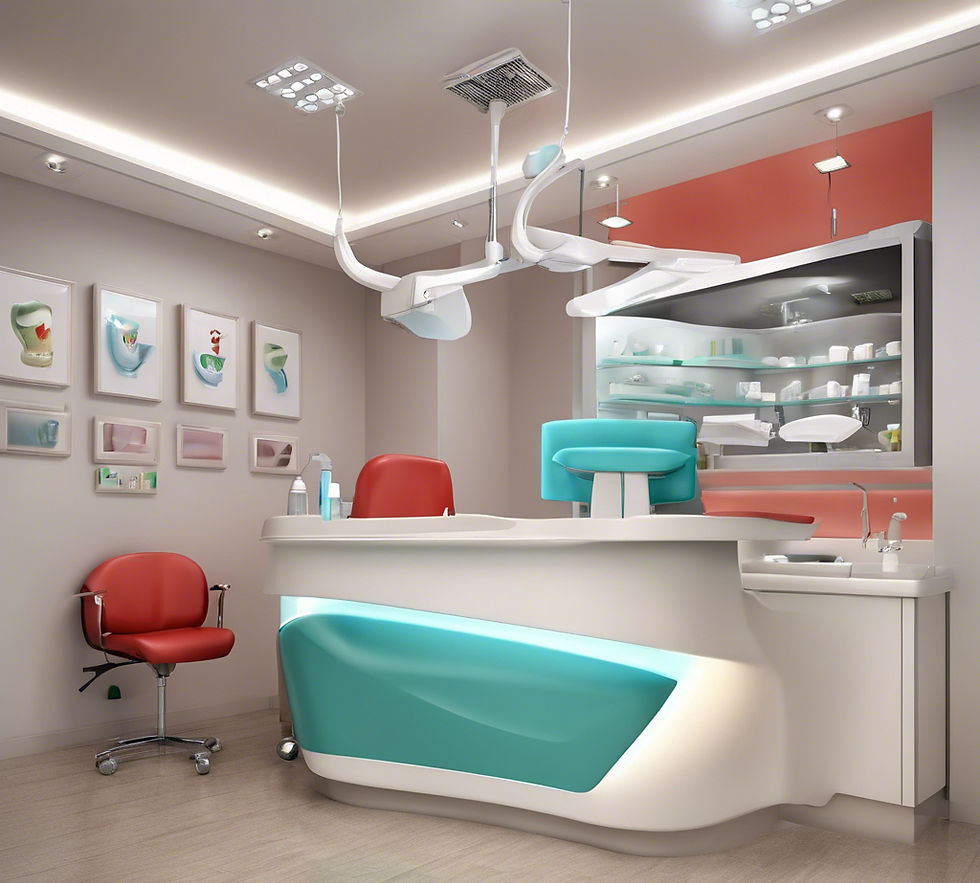Ceramic Dental Implants vs. Traditional Implants: Which is Right for You?
- blindstorontoca
- Jun 24, 2024
- 4 min read
When it comes to replacing missing teeth, dental implants have become the gold standard due to their durability, functionality, and aesthetic appeal. However, potential patients often face the choice between ceramic dental implants and traditional titanium implants.
Both options have their advantages and considerations, making the decision process critical for achieving the best outcome. In this comprehensive guide, we will compare ceramic dental implants with traditional implants to help you determine which option is right for you.
Understanding Dental Implants

Dental implants are artificial tooth roots that provide a permanent base for fixed or removable replacement teeth. They are designed to blend seamlessly with your natural teeth and restore full functionality to your mouth. The two primary types of dental implants are ceramic and traditional (titanium) implants, each with unique properties and benefits.
Ceramic Dental Implants: An Overview
Composition and Structure
Ceramic dental implants are made from zirconia, a type of high-strength ceramic. Zirconia is known for its biocompatibility, making it an excellent material for dental implants. These implants are typically one-piece, which combines the implant and the abutment into a single unit, reducing the risk of bacterial infiltration.
Aesthetic Appeal
One of the most significant advantages of ceramic dental implants is their aesthetic appeal. The natural white color of zirconia closely resembles natural tooth enamel, making it an ideal choice for patients concerned about the appearance of their dental restorations. This feature is particularly beneficial for implants in the front of the mouth, where visibility is higher.
Biocompatibility and Allergy Concerns
Ceramic dental implants are highly biocompatible, meaning they are well-tolerated by the body. They do not trigger allergic reactions or inflammatory responses, making them suitable for patients with metal sensitivities or allergies. The absence of metal also eliminates the risk of metal corrosion and related complications.
Osseointegration
Osseointegration refers to the process by which the implant fuses with the jawbone. Ceramic implants have shown excellent osseointegration properties, promoting stable and long-lasting results. This integration ensures that the implant remains securely in place, providing a strong foundation for the replacement tooth.
Traditional Titanium Implants: An Overview
Composition and Structure
Traditional dental implants are made from titanium, a metal known for its strength, durability, and biocompatibility. Titanium implants typically consist of two parts: the implant itself and a separate abutment that connects the implant to the crown. This two-piece design allows for flexibility in placement and restoration.
Strength and Durability
Titanium implants are renowned for their strength and ability to withstand significant chewing forces. They have a long track record of success and are considered the standard in implant dentistry. This durability makes them suitable for both front and back teeth, where bite pressure is highest.
Osseointegration
Titanium’s excellent osseointegration properties have made it the material of choice for dental implants for decades. The metal’s ability to bond with bone tissue ensures a stable and secure foundation for the replacement tooth. This integration process is critical for the longevity and functionality of the implant.
Cost and Availability
Titanium implants are generally more widely available and may be less expensive than ceramic dental implants. Their long history of use means that many dental professionals are experienced in placing and restoring titanium implants, which can be a factor in choosing this option.
Comparing Ceramic Dental Implants and Traditional Implants
Aesthetic Considerations
For patients prioritizing aesthetics, ceramic dental implants offer a distinct advantage. The natural white color of zirconia blends seamlessly with natural teeth, eliminating the risk of dark lines or discoloration often associated with metal implants. This makes ceramic implants particularly appealing for visible areas of the mouth.
Biocompatibility and Health Concerns
Patients with metal allergies or sensitivities may prefer ceramic dental implants due to their hypoallergenic properties. Additionally, the biocompatibility of zirconia reduces the risk of inflammatory reactions and tissue irritation. On the other hand, titanium implants are also highly biocompatible, but some patients may still experience allergic reactions or sensitivities to metal.
Strength and Longevity
Both ceramic and titanium implants offer excellent strength and durability. However, titanium’s long track record and extensive clinical data provide reassurance regarding its longevity and reliability. While ceramic implants are also strong, they may be more prone to fracture under extreme forces, making them less suitable for patients with heavy bite pressure or bruxism (teeth grinding).
Placement and Restoration Flexibility
Titanium implants’ two-piece design allows for greater flexibility in placement and restoration. The separate abutment can be angled or adjusted to achieve optimal positioning, which can be beneficial in complex cases. Ceramic dental implants, with their one-piece design, may have limitations in this regard, potentially requiring more precise placement.
Cost Considerations
Ceramic dental implants are typically more expensive than traditional titanium implants. The cost difference can be attributed to the material itself and the manufacturing process. Patients should weigh the aesthetic and health benefits of ceramic implants against their higher cost when making a decision.
Long-Term Success
Both ceramic and titanium implants have high success rates, with studies showing long-term stability and functionality. The choice between the two often comes down to individual preferences, health considerations, and specific clinical needs. Consulting with a dental professional who specializes in implantology can help determine the most suitable option based on your unique situation.
Making the Right Choice
When deciding between ceramic dental implants and traditional implants, it’s essential to consider your priorities and specific dental needs. Here are some key factors to keep in mind:
Aesthetic Concerns: If the appearance of your dental restoration is a top priority, ceramic dental implants may be the better choice due to their natural tooth-like color.
Allergies and Sensitivities: For patients with metal allergies or sensitivities, ceramic implants offer a hypoallergenic alternative.
Strength and Durability: If you require implants for areas of the mouth that experience high bite pressure, traditional titanium implants may provide the strength and durability needed.
Cost: Consider your budget and the long-term value of the implant. While ceramic implants may be more expensive, their aesthetic and health benefits may justify the higher cost for some patients.
Conclusion
Ultimately, both ceramic dental implants and traditional titanium implants offer effective solutions for replacing missing teeth. Consulting with an experienced implant dentist can help you make an informed decision that aligns with your oral health goals and lifestyle needs. Whether you choose ceramic or titanium, dental implants can significantly enhance your quality of life by restoring your smile and improving your overall oral health.

Comments